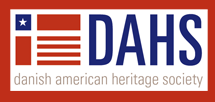Keywords
Danish American communities, Danish immigrants
Abstract
On April 6, 1917, the United States declared war on the German Empire, officially entering the three-year-long conflict now known as the First World War. At the time the US entered the conflict many American-born citizens felt uneasy about the recent immigration of thousands of Europeans and the possibility of those new residents having divided loyalties between their homelands and adopted country. These fears proved to be largely unfounded, as millions of naturalized Americans took up the call to arms issued by the United States, even in the face of increasingly xenophobic laws and policies. This included the Danish American community, which took a particular interest in the war’s progress because of their Danish-speaking compatriots within the German-administrated region of Slesvig-Holsten.2 The entrance of the US into the war allowed President Woodrow Wilson to propagate his vision for the post-war world. His ideals of self-determination spread to aspiring nationalists across Europe, anti-colonial forces throughout Africa and Asia, and members of his own citizenry seeking rectification of historical offenses. The Danish American community experienced intense debates over these ideals, as Wilsonianism clashed with the historical memory of German aggression towards Denmark and Danish-speaking Slesvigers.
Recommended Citation
Gesme, Ryan J.
(2020)
"From the Eider River to the Great Plains: The Danish American Community and the 1920 Slesvig Plebiscites,"
The Bridge: Vol. 43:
No.
1, Article 7.
Available at:
https://scholarsarchive.byu.edu/thebridge/vol43/iss1/7
Included in
European History Commons, European Languages and Societies Commons, Regional Sociology Commons


